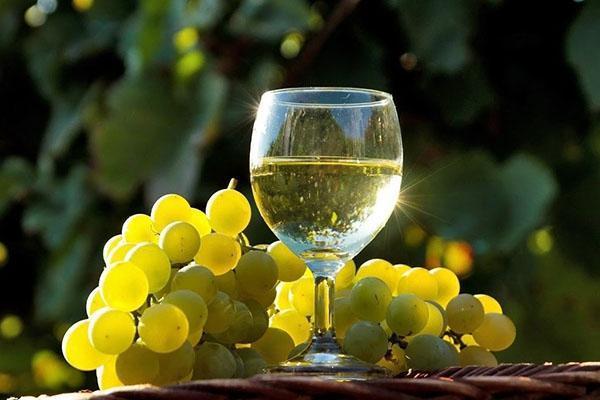Making white wine from Citron Magarach
 After harvesting wine grapes, it needs to be processed. It is very simple to make wine from white grapes of Citronny Magarach. First, the berries are separated from the stalks, and then pressed by hand.
After harvesting wine grapes, it needs to be processed. It is very simple to make wine from white grapes of Citronny Magarach. First, the berries are separated from the stalks, and then pressed by hand.
It is strictly forbidden to wash berries before processing. On the surface of the grapes there are natural wine yeast, without which the grape juice will sour. You can use a press to process berries. This will speed up the wine making process, as less juice will remain in the pulp.
The so-called "first" wine can be made from pure juice, and the "second" wine can be made from grape pulp. You can also not separate the juice and grape pulp and put a full-fledged wort for fermentation.
To prepare wine, you can use only enameled, glassware or stainless steel containers. Otherwise, the dishes will oxidize and metal oxides will get into the finished product. It is absolutely forbidden to drink such wine.
After filling the container with wort, it is placed in a cool place for a day. The temperature in the room where the container is located must be from 10ABOUTFrom to 16ABOUTC. It is covered with a latex glove or a water-lock lid. Then the wort should be placed in a warm room for two weeks, where it will ferment.
Read also the article: grape wine recipe at home!
Preparing wine after two weeks of fermentation
After the first week of fermentation, add 1 kg of sugar per 10 liters of wort to the wort.
If you want to make the so-called "second wine", add 50% of the total amount of grape juice to the strained pulp. Such wine should ferment for two weeks. After two weeks of fermentation, 1 kg of sugar is also added to 5 liters of the wort of the "second" wine. It is stirred well and left to ferment "First" and "Second" wine for another week.
The final product, obtained from the "second" must, comes out much tastier than wine made from pure grape juice. The drink made from undivided wort is slightly inferior in taste to the "second" wine.
Draining sediment and third fermentation
After the second fermentation you need:
- strain the grape must several times through a sieve;
- add 500 g of sugar to strained grape juice;
- cover the container with the wort with a latex medical glove.
The sediment that has fallen to the bottom of the container can be used to prepare chacha or other strong drinks. This sediment is concentrated wine yeast, which, when added to the wort of another drink, forms a large amount of alcohol. For example, cognac is prepared using wine yeast.
After cleaning from the sediment, another 500 g of sugar is added to the wine. It must be stirred well, otherwise the tartar will cover the sugar, the yeast will not be able to process it, and a sugar layer will form at the bottom of the container.
Tartar is a sediment that forms after the third and subsequent fermentation. Its density is much higher than that of the primary wine sediment. In the third fermentation, the wort is put for primary clarification. The tartar settles on the walls of the wort vessel. It is a mixture of sugar crystals and grape pomace. As a rule, less tartar is formed than the primary sediment, but if the grapes have a pronounced nutmeg flavor, then the volume of dense sediment is the same as the volume of the primary sediment.
During the third fermentation, the water seal can break off, so the lid is tightly wrapped with a cord or cling film tape. If you are using a latex glove, pierce each “finger” with a medical syringe needle. It will allow air to pass a little, and the glove will not burst from the gas pressure.
Tartar removal and wine maturation
During the last stage of wine preparation you need:
- clear the drink from tartar by filtering the wine through a fine sieve and cheesecloth;
- balance the taste of wine by adding sugar to it;
- put the wine in a cool room to stop the process of alcohol formation.
You can clear the drink from tartar by ordinary filtering through a fine sieve. After straining, sugar is added to the wine to taste: if you like strong dry wines, do not add sugar to the drink. Like semi-sweet wines - add 150 g of sugar to 10 liters of finished wine, and if you like sweet wines - add 300 g of sugar to 10 liters of wine. Sugar must be mixed well.
The finished wine is poured into separate glass bottles, and to stop the fermentation process, the bottles are placed in a cellar or loggia, where the air temperature does not rise above 10ABOUTC. At low temperatures, yeast in wine will die within three days. During this time, they will process some more sugar. This process is called wine maturation. After ripening, the white wine will be ready to drink.
During ripening, the wine may begin to ferment if the storage temperature is not observed. In this case, it is transferred to a warm room and the end of fermentation is awaited. This wine will be very strong, but some of the added sugar will still remain in the drink.